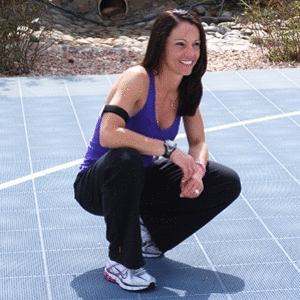Start by determining your maximum heart rate. I suggest the following formula: 220 - your age = estimated maximum heart rate.
Take the estimate and multiply by appropriate intensity (this will vary between 40 and 90 percent depending on your physical condition).
Example: 50-year-old female starting a cardiovascular fitness program after 10 years of activity:
220 - 50 = 170 (maximum heart rate). 170 X 50 percent (suggested target rate based on starting condition) = 85.
On a 10 minute walk the target heart rate should be around 85 for at least 5 minutes.
Important to be able to monitor heart rate during exercise.
Start by subtracting your age from 220. This is a theoretical heart rate that is considered your maximum. If you are new to increasing your activity, build toward working out at 60 percent of this number. For example if you are 40, your theoretical maximum heart rate is 180 and 60 percent of that is 108 beats per minute. Warm up for 5 minutes then increase intensity until you reach 60 percent of your heart rate max. Maintain it only for as long as you are comfortable, even if only for a few minutes. Work toward maintaining it for 30 minutes. Attempt this for 2 to 3 days per week. Remember though, that the formula is a rough estimate and a good place to start, and is not the definitive measure of intensity.
Also use a talk-test to see how hard you are working. At 60 percent, you’ll be able to comfortably deliver full sentences. If you start gasping or can only get out single words at a time, you are working too hard. Once you can master working out at 60 percent (2 to 3 days per week for 30 minutes at a time without any problem), you can begin to increase your intensity and/or time.
Your heart rate (and exercise intensity) is highly dependent on your fitness goals. When starting out a new program, an intensity of 65 to 75 percent of maximum heart rate (MHR) is recommended. If the goal is to increase overall strength and endurance, aim for 80 to 85 percent MHR. Finally, if the goal is to increase work capacity at high levels, work up to 86 to 90 percent of MHR.
This can be calculated as follows:
- 220 - age = MHR
- MHR x training intensity = suggested heart rate
- Ex: 220 - 25 = 195
195 x .80 = ___
195 x .85 = ___
Continue Learning about Evaluating & Measuring Fitness
Important: This content reflects information from various individuals and organizations and may offer alternative or opposing points of view. It should not be used for medical advice, diagnosis or treatment. As always, you should consult with your healthcare provider about your specific health needs.

